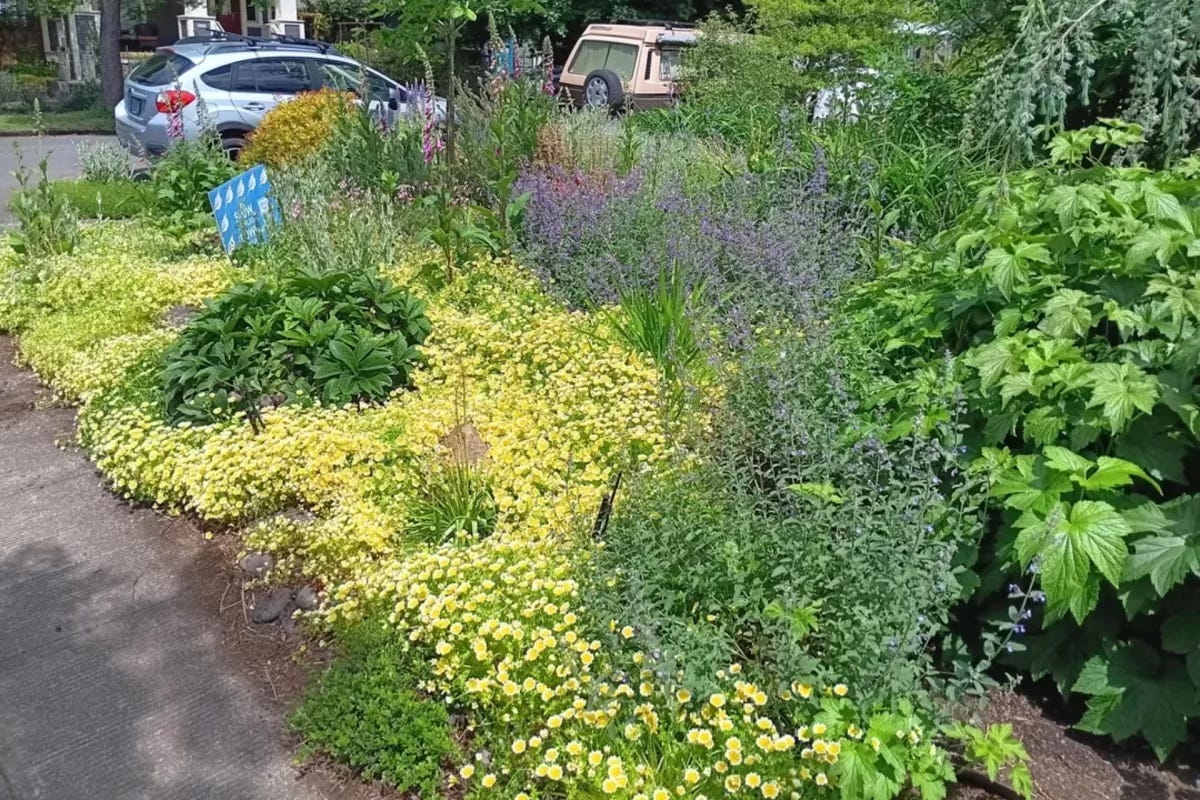
About 70% of domestic honeybee colonies in the U.S. died out last winter. It’s part of a trend of big honeybee die-offs over the last few years.
Need-to-Know: Silent Spring —Major Losses of Birds, Bees, and Pollinators
Wild bees and other pollinators aren’t doing great either, with at least 40% facing extinction, according to the Intergovernmental Panel for Biodiversity Ecosystem Services (IPBES) pollinator assessment.
Three-quarters of all crop types globally require insect pollination. These crops provide 35% of human food calories. Hence the adage, one in three bites depends on pollinators. ( See previous NtKpost Insects Are Us.)
Bee and pollinator health are being impacted by a combination of pesticides, loss of quality habitat, hotter temperatures, and parasites. There is also new evidence that increasingly ubiquitous LED lighting may be disrupting the circadian rhythms of honey bees and other insects.
It’s a sadly similar story for birds.
A brand new analysis just found that 75% of nearly 500 bird species across North America are declining across their ranges. Over 65% of these birds saw big declines in their numbers.
I’ve certainly noticed the decline of some species. For example, a near total absence of blue jays in my neighborhood. The same thing with wild bees and butterflies.
Three things we can do to help turn these declines around.
Stop using pesticides.
They’re not harmless, otherwise they wouldn’t work. And they aren’t selective, hurting both “bad” and “good” insects including pollinators.
Beware: Many annual plants from nurseries/garden centers were grown using seeds treated with neonics, systemic pesticides that make plant leaves and flowers toxic for insects. These are banned in Europe. (I wrote about this for Nat Geo a few years ago. Here’s most of my reporting on neonics.)
Rewild your yard.
Turn your lawn, or a part of it, into a pollinator garden with native plant species. Lawns provide little food or habitat for anything and take more work to maintain than a native garden.
You can either dig up your lawn and throw in a mix of native seeds or just let part of your yard go wild on its own. We’ve done both.
Need-to-Know: Countries are setting aside 30% for nature—you can too.
Most countries in the world have committed to protecting 30% of their land and sea for nature. Why not set aside 30% of your yard for nature? That’s what we’ve done in our backyard. While it’s not as pretty as the native gardens in the front yard, lots of bees and birds still visit.
Plant native species.
They grow naturally without fertilizers, pesticides, or excessive watering. Even if you live in an apartment, a balcony or window garden box with native plants will get visits from bees and other pollinators.
Need-to-Know: Native gardens are the hottest trend in gardening
Native gardens are increasingly popular. House Beautiful magazine declared "rewilding" the biggest gardening trend of 2024. The article has some great tips, i.e. “Do Less”: just let part of your yard become more naturalized on its own.
"You can help allow the natural rejuvenation of nature with a few small steps. The mindset is that you're gardening with nature, not for nature."
There are lots of resources out there to help you get started. Here’s a couple
Until next time. Happy Native Gardening!
Stephen





I like it, and I'm doing the "letting nature do it", as much as I can; however, in my area, if you let nature take over, what you will get is 15 million dandelions and every invasive plant the previous owner planted (or the squirrels did), so some intelligent monitoring and managing is required. Hahaha.